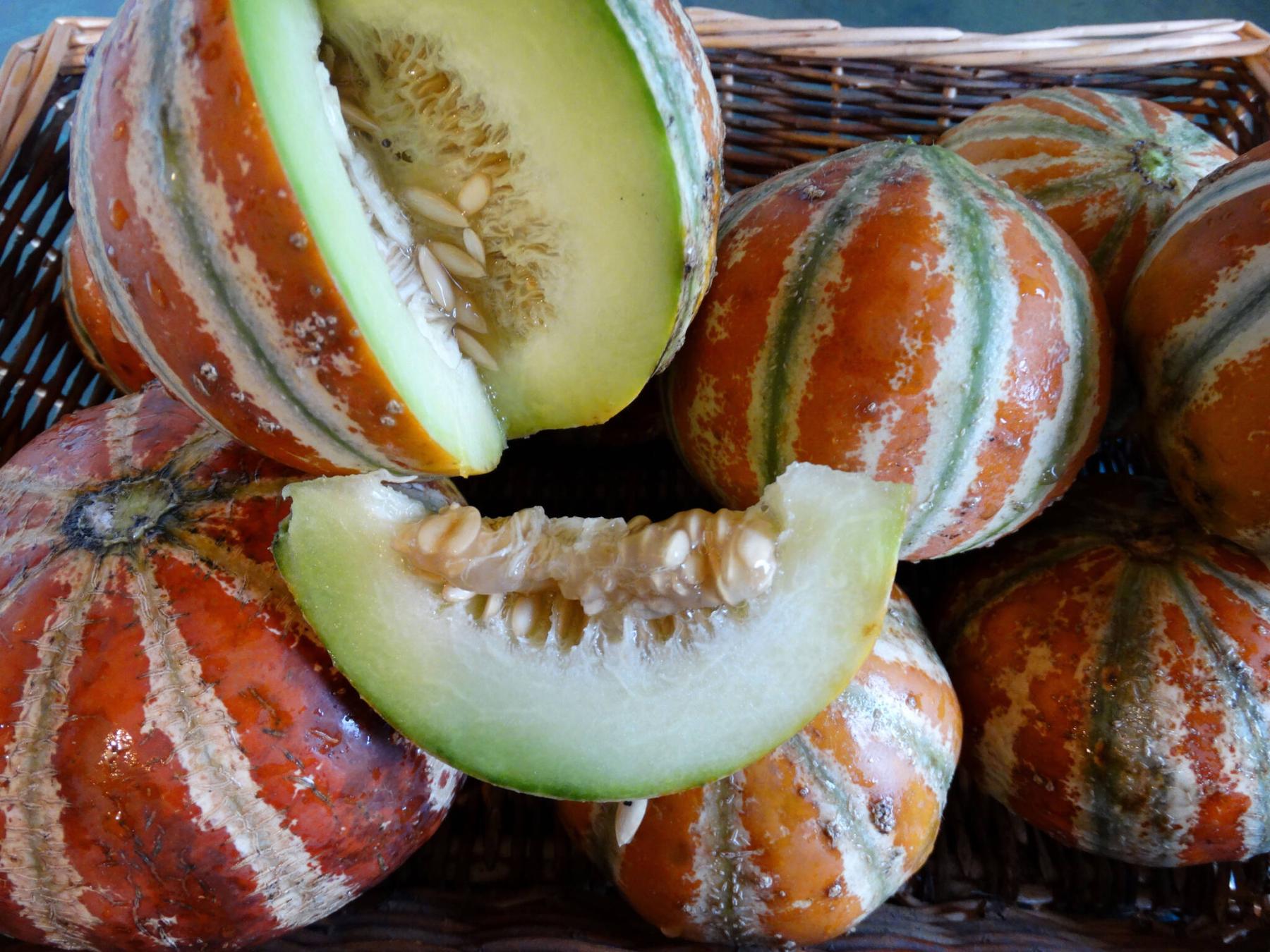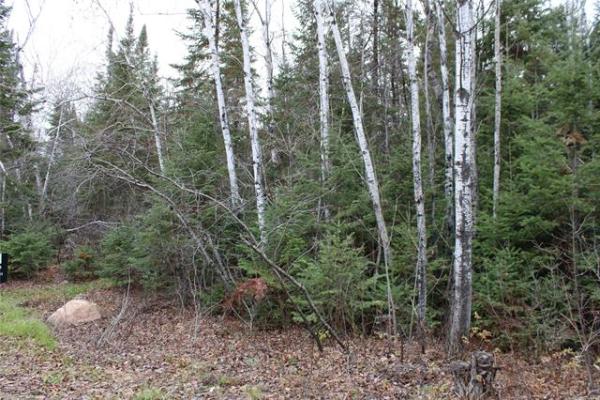
Red orach is a nutrient-rich superfood that is easier to grow than spinach. Try it in containers.
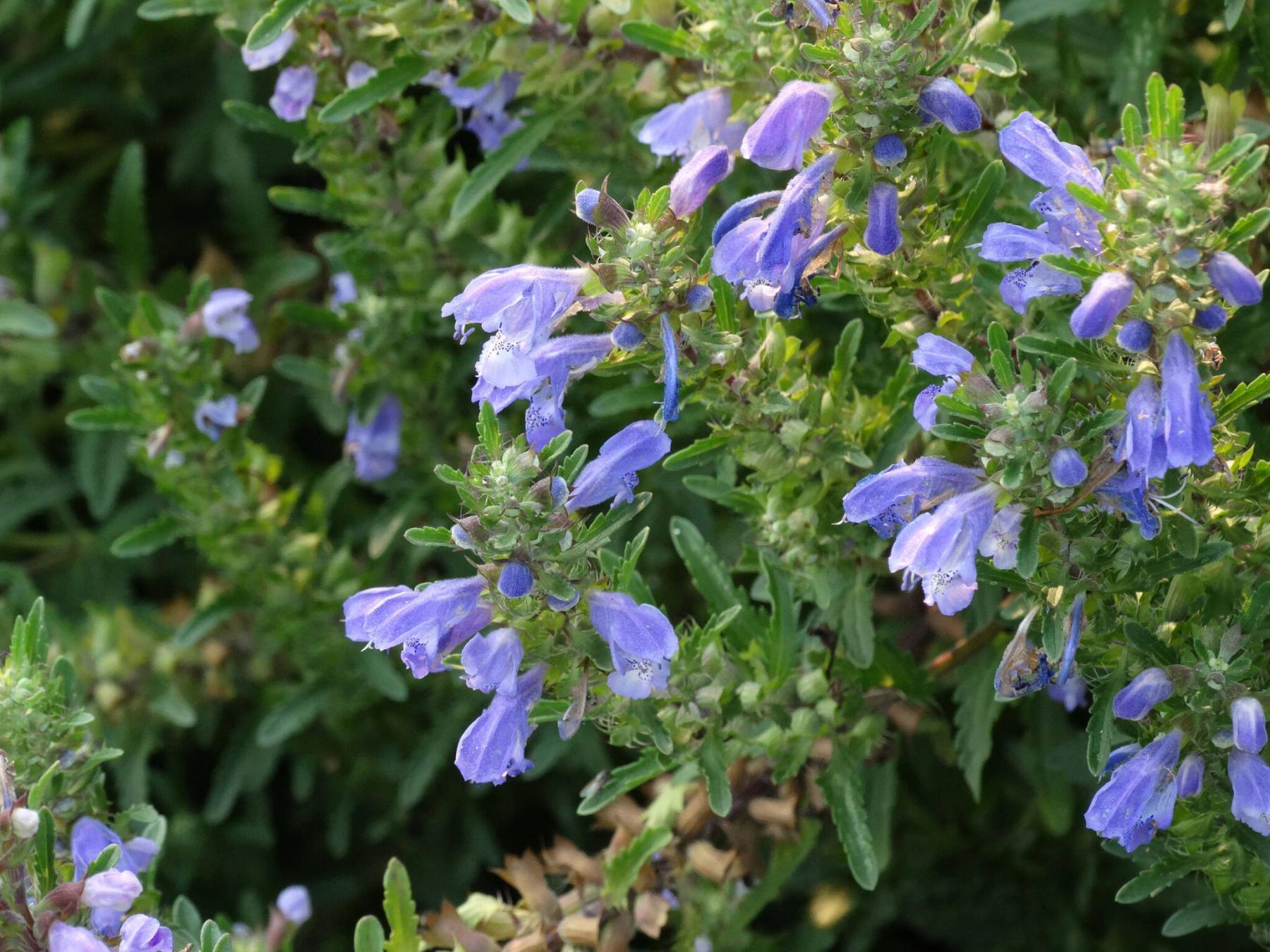
Once dried, the lemon-scented leaves and flowers of the Moldavian Dragonhead plant make a delicious, healthy tea.
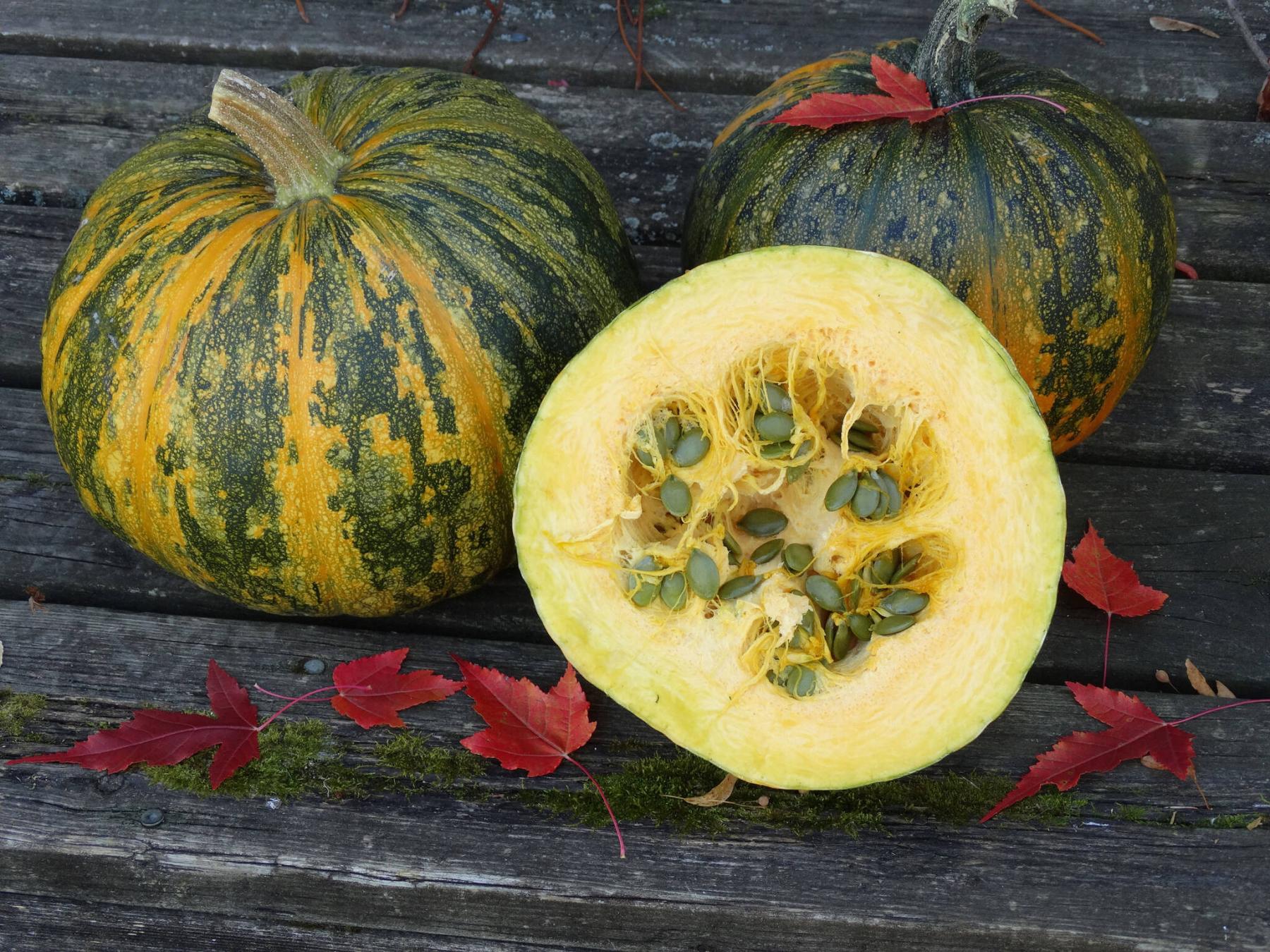
Grown for its protein-rich seeds, Styrian hulless pumpkin does well in short-season climates.
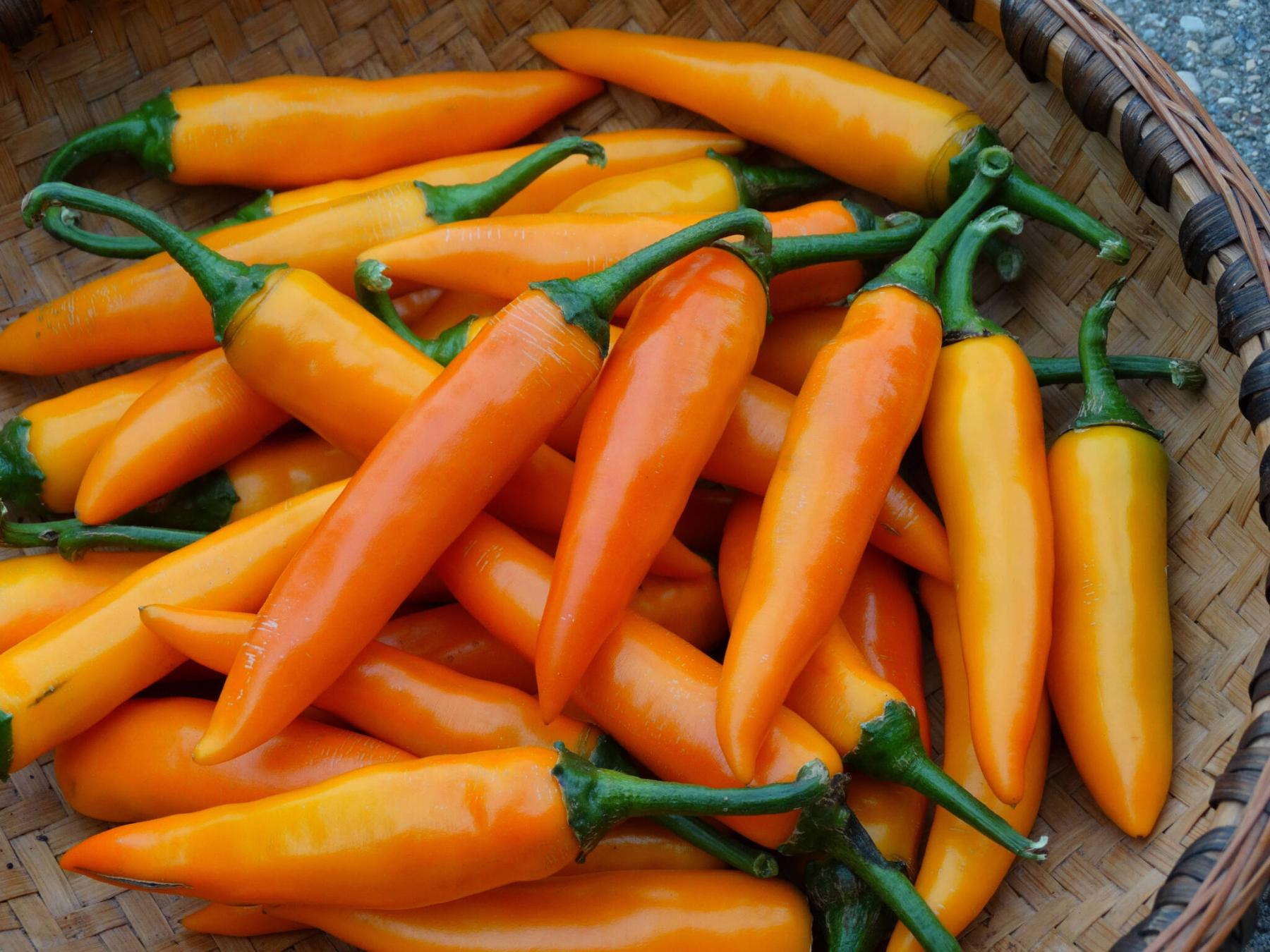
A hot (but not too hot) heirloom pepper, Bulgarian Carrot Pepper packs a fruity flavour.
With food prices set to rise in 2025, growing even just a portion of your own food could help make a dent in your grocery budget.
The 2025 Food Price Report released in December by researchers from Dalhousie University, the University of British Columbia, the University of Guelph and the University of Saskatchewan predicts vegetables could increase in price by five to seven per cent this year.
But in addition to saving on grocery bills, you can also pack more nutrition into your diet by growing a greater diversity of fresh produce in your garden, balcony, patio containers or community plot.
“Heirloom vegetables are nutrient-dense and full of delicious flavour,” says Tanya Stefanec, who took a break from filling a raft of seed orders to talk with me last week. Stefanec owns Heritage Harvest Seed, a mail-order company based in Fisher Branch that specializes in more than 800 varieties of heirloom vegetables, herbs, flowers and ancient grain seeds.
“The main focus of my business has always been the preservation of heirloom varieties, because they are open-pollinated varieties that have been passed down through the generations. You can save your own seed from heirloom varieties and over time the seed will adapt to your growing conditions. You can save the seed from a hybrid vegetable, but it won’t be true to type.”
Stefanec started her business in 2002 in the fertile Carman area. Five years ago she moved her business to Fisher Branch where she grew up and where her great-grandparents once lived.
“I’m seeing that people want to grow more of their own food. If you have a balcony, you can grow some vegetables in pots. If you are living in an apartment without a balcony, you can grow salad greens under lights along with small, fruited tomatoes.”
Stefanec has grown and preserved many types of heirloom vegetables.
“There are thousands and thousands of heirloom varieties so I could spend my whole life growing different varieties and never grow them all — it’s really exciting.”
Stefanec recommends growing unique, easy-to-grow heirloom edibles that are also a powerhouse of nutrition. One of her favourite leafy vegetables is red orach, which is sometimes referred to as the new kale because it is packed with vitamins and minerals and is high in calcium.
“Red orach is a nutrient-rich superfood,” says Stefanec. “It can be used as a spinach substitute. Add fresh orach leaves to salad or steam it. Red orach also freezes easily. The nice part is you can plant red orach as soon as the soil is workable in the spring.”
Red orach, also known as Atriplex hortensis, is a staple in the Mediterranean region and thrives in heat.
“You can harvest it throughout the summer and it is much slower to bolt than spinach,” says Stefanec.
Highly ornamental with reddish purple leaves, red orach can be grown in raised beds or patio containers.
“You can even grow it under grow lights. It’s easier to grow than spinach and prettier, too.”
Another of Stefanec’s favourites is Styrian hulless pumpkin, a green-striped heirloom pumpkin from Styria, Austria. It is grown for its protein-rich hulless seeds.
“Styrian is very productive and does well in short-season climates,” she says. “Pumpkin seeds from a home-raised heirloom pumpkin have even more nutrition and they are tasty, too.You only need to plant a couple of pumpkins and once they’re ripe, scoop out the seeds and roast them in your oven and you’ll have a very healthy snack all winter long. I strongly recommend this variety.”
Kajari melon is a brilliant copper-red fruit striped with green and white.
“I just find Kajari melon fascinating, beautiful and delicious,” says Stefanec. “It’s an old heirloom originally from India. It looks so exotic — like a work of art — but it does really well in Manitoba and is early (70 days to maturity) and productive. The light-green flesh tastes similar to honeydew.”
Blue Coco bean is one of the oldest of the purple-podded pole bean varieties. Extremely rare, Blue Coco is a French heirloom dating back to as early as 1775.
“The pods are a beautiful purple that turn green when steamed,” says Stefanec.
The dry beans have a meaty texture and are delicious in soups and stews. Blue Coco bean is quite early for a pole bean (60 days for snaps), and is also very tolerant of heat and drought. Pole beans require trellising for support.
Beans are legumes, so in addition to being high in protein and fibre, beans improve your soil by boosting aeration and moisture retention, and improving soil structure.
Two of the ornamental and productive herbs Stefanec recommends are sorrel and lovage.
“I think sorrel is really underused. It’s a leafy green but also an herb. It’s very high in nutrients and is a hardy perennial to zone 3. The young leaves give a burst of zesty flavour in salads. You can also use it in soups, sauces or fish dishes, so it’s really quite versatile.”
Lovage is a perennial herb hardy to zone 2. It’s high in vitamin C and tastes similar to celery. Native to southern Europe and Asia, lovage dates back to antiquity and was a favourite of Charlemagne.
“It’s a large growing herb that can reach six- or seven-feet tall,” says Stefanec. “It would be more suited to gardens with space. You can grow it almost as a hedge.”
How about a delicious and aromatic cup of flower-infused tea? Moldavian Dragonhead is an heirloom annual flower with bright-blue blooms first described by Carl Linnaeus in 1753. The lemony-scented leaves and flowers are commonly used in making tea.
“Moldavian Dragonhead smells similar to lemon balm. The dried leaves and flowers make a nice tea that promotes digestive health and relaxation. In your garden, it attracts pollinators. It is a win-win plus it’s easy to grow.”
Interestingly, Stefanec says ancient grains are one of her best sellers.
“It is actually a huge trend in the last couple of years. The ancient grains have much more protein and nutritive value than modern varieties.”
Stefanec recommends trying Hourani wheat, an ancient type of durum wheat cultivated for millennia in northern Jordan and southern Syria.
“It is great for making pasta and bread and is also very nutritious with 14 per cent protein,” she says. Stefanec grew it for the first time last summer and was thrilled with the results.
Of course, peppers and tomatoes are at the top of every gardener’s list.
The Bulgarian carrot pepper is one of Stefanec’s many new varieties this year. A bright-orange, thick-walled hot pepper from Bulgaria, this heirloom variety has a fruity flavour and does well in short-season climates.
“All of the more than 800 heirloom varieties grown by Heritage Harvest Seed are planted by hand and hand-harvested,” says Stefanec.
To learn more, visit heritageharvestseed.com.
colleenizacharias@gmail.com

